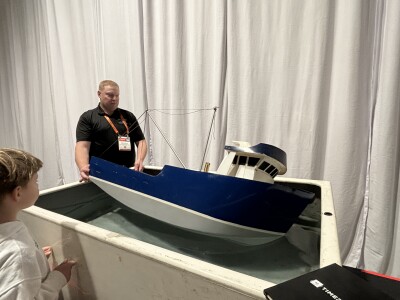As Gulf of Mexico and South Atlantic shrimp boats tapered off their harvest at the end of 2016, a scarcity of more marketable large shrimp has the domestic industry hoping for a more abundant catch of larger sizes when spring rolls around.
Processors loathe the possibility of being stuck with big stocks of tiny shrimp, which made up the bulk of the catch in both the 2016 spring and fall seasons in Louisiana and other shrimp-producing states.
That’s made for dock prices of less than $1 per pound in many cases, with reasonably high prices paid for 21/25-count or larger.
“In a year like this, we look at how in the May season all we caught was small shrimp, and then in August small shrimp,” said Kimberly Chauvin of the David Chauvin Seafood Co. in Dulac, La. “They are going to have to get rid of all this before they start buying in the May season, and that is scary.”
The New York wholesale market showed $4.60 per pound at year’s end for 36/40-count frozen headless shrimp, which would translate to about half that to the boats. But shrimpers and dock owners explain that the relatively healthy price is misleading, since those larger sizes are difficult to find.
David Veal, president of the American Shrimp Processors Association, agreed that prices at the markets are higher than in some prior years. As always, the shrimp industry is beset by concerns over low import prices, which have in the past kept prices down.
“Imports are continuing to grow at an alarming rate,” Veal said. “What the new presidential administration will decide to do about imports, if anything, remains to be seen.”
Veal said finding a balance that will allow processors a profit in the coming year will be essential for the industry’s health overall. In 2015 processors took considerable losses, he said, because they were stuck with large stocks of small shrimp that were difficult to sell at a profitable price.







